| Muby Chemicals and a few more manufacturing units are in Mubychem Group, the pioneer manufacturer of Magnesium Chloride Anhydrous Hexahydrate & Pharmaceutical Chemicals in India since 1976. Currently we have manufacturing facilities spread across Western India. No other vendor in the world knows Magnesium Chloride Anhydrous any better than we do. We are exporters to all the countries across the globe. | |
|
(FDA) GMP GLP Approved, ISO-9001 Certificate, "REACH" registered, ISO-22000, Kosher Certified' Halal Certified, HACCP |
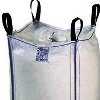

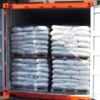
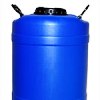

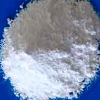
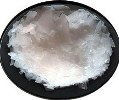
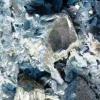

Magnesium Chloride Hexahydrate Anhydrous BP USP FCC Food ACS Analytical Reagent Grade Manufacturers
Magnesium Chloride Hexahydrate CAS Number 7791-18-6
Magnesium Chloride Anhydrous Number CAS 7786-30-3
SDS MSDS of Magnesium Chloride Hexahydrate Manufacturers
SDS MSDS of Magnesium Chloride Anhydrous is on Home Page
We also offer from India very pure Pharmaceutical grade Magnesium Chloride Anhydrous of Dry Basis Assay >99.9%+, free from all impurities.
Magnesium Chloride USP
MgCl2.6H2O 203.30
Magnesium Chloride USP
Magnesium Chloride Hexahydrate USP[CAS 7791-18-6].
Magnesium Chloride Anhydrous USP 95.21 [CAS 7786-30-3].
Magnesium Chloride contains not less than 98.0 percent and not more than 101.0 percent of MgCl2·6H2O.
Packaging and storage— Preserve in tight containers.
Labeling— Where the product is intended for use in hem dialysis, it is so labeled.
Identification— A solution (1 in 20) responds to the tests for Magnesium and for Chloride
pH: between 4.5 and 7.0, in a 1 in 20 solution in carbon dioxide-free water.
Insoluble matter— not more than 0.005% is found.
Sulfate — A 10-g portion shows no more sulfate than corresponds to 0.50 mL of 0.020 N sulfuric acid (0.005%).
Barium— Dissolve 1 g in 10 mL of water, and add 1 mL of 2 N sulfuric acid: no turbidity is produced within 2 hours.
Limit of calcium— the limit is 0.01%.
Potassium— Dissolve 5 g in 5 mL of water, and add 0.2 mL of sodium bitartrate TS: no turbidity is produced within 5 minutes.
Aluminum (where it is labeled as intended for use in hem dialysis)— the limit is 1 µg per g.
Heavy metals — the limit is 0.001%.
Organic volatile impurities: meets the requirements.
Magnesium Chloride BP
MgCl2.6H2O
Magnesium Chloride BP
Magnesium Chloride Hexahydrate BP[7791-18-6].
Magnesium Chloride Anhydrous BP95.21 [7786-30-3].
DEFINITION
Content
98.0 per cent to 101.0 per cent of MgCl2,6H2O.
CHARACTERS
Appearance
Colourless crystals, hygroscopic.
Solubility
Very soluble in water, freely soluble in ethanol (96 per cent).
IDENTIFICATION
Water % (see Tests).
It gives reaction of chlorides.
It gives the reaction of magnesium.
TESTS
Solution S
Dissolve 10.0 g in carbon dioxide-free water R prepared from distilled water and dilute to 100.0 ml with the same solvent.
Appearance of solution
Solution S is clear and colourless.
Acidity or alkalinity
To 5 ml of solution S add 0.05 ml of phenol red solution R. Not more than 0.3 ml of 0.01 M hydrochloric acid or 0.01 M sodium hydroxide is required to change the colour of the indicator.
Bromides
Maximum 500 ppm.
Sulphates
Maximum 100 ppm, determined on solution S.
Aluminium
Maximum 1 ppm, if intended for use in the manufacture of peritoneal dialysis solutions, hem dialysis solutions, or haemofiltration solutions.
Arsenic
Maximum 2 ppm, determined on 0.5 g.
Calcium
Maximum 0.1 per cent.
Iron
Maximum 10 ppm, determined on solution S.
Potassium
Maximum 5.0 × 102 ppm, if intended for use in the manufacture of parenteral dosage forms.
Atomic emission spectrometry: Passes the test
Heavy metals
Maximum 10 ppm.
Water
51.0 per cent to 55.0 per cent, determined on 50.0 mg.
Magnesium Chloride FCC Food Grade, US Food Chemical Codex
MgCl2·6H2O Formula weight 203.30
DESCRIPTION
Magnesium Chloride occurs as colorless flakes or crystals. It contains six molecules of water of hydration. It is hygroscopic, very soluble in water, and freely soluble in alcohol.
Function: Color-retention agent; firming agent.
REQUIREMENTS
Identification: A 1:10 aqueous solution gives positive tests for Magnesium and for Chloride.
Assay: Not less than 99.0% and not more than 105.0% of MgCl2·6H2O.
Ammonium: Not more than 0.005%.
Lead: Not more than 4 mg/kg.
Sulfate: Not more than 0.03%.
Magnesium chloride (E511 is an important coagulant used in the preparation of cheese and tofu. In Japan it is sold as nigari (derived from the Japanese word for "bitter"), In China, it is called lushui. Nigari or lushui consists mostly of magnesium chloride, with some magnesium sulfate and other trace elements. It is also an ingredient in baby formula milk.
Magnesium Chloride Hexahydrate ACS Analytical Reagent Specifications
Magnesium Chloride ACS American Chemical Society Reagent Grade
MgCl2 . 6H2O
Formula weight 203.30
CAS Number 7791-18-6
REQUIREMENTS
Assay: 99.0-102.0% MgCl2 . 6H2O
MAXIMUM ALLOWABLE
Insoluble matter: 0.005%
Nitrate (NO3): 0.001%
Phosphate (PO4): 5 ppm
Sulfate (SO4): 0.002%
Ammonium (NH4): 0.002%
Barium (Ba): 0.005%
Calcium (Ca): 0.01%
Manganese (Mn): 5 ppm
Potassium (K): 0.005%
Sodium (Na): 0.005%
Strontium (Sr): 0.005%
Heavy metals (as Pb): 5 ppm
Iron (Fe): 5 ppm
Magnesium Chloride Anhydrous Hexahydrate manufacturers at:
MUBY CHEMICALS
S-8, SARIFA MANSION, 2ND FLANK ROAD,
CHINCHBUNDER, MUMBAI 400009, INDIA
TEL: (OFFICE)
91-22-23770100, 23726950, 23774610, 23723564. FAX: 91-22-23728264
Email: info@mubychem.com
USA & Canadian Customers may Call 773-829-5811

Copyright
and Usual
Disclaimer
is Applicable
Last
updated:
28.02.22
Magnesium Chloride Hexahydrate SDS MSDS Sheet, Material Safety Data Sheet
1. Product Identification
Synonyms: Magnesium chloride hexahydrate; Magnesium chloride 6-hydrate.
CAS No.: 7791-18-6
EINECS: EC Number: 232-094-6
Molecular Weight: 203.31
Chemical Formula: MgCl2.6H2O
Recommended usage: Industrial Manufacturing.
2. Hazards Identification
GHS, Globally Harmonized System Classification in accordance with 29 CFR 1910
Classification according to Regulation (EC) No 1272/2008
Not a hazardous substance or mixture according to Regulation (EC) No. 1272/2008.
This substance is not classified as dangerous according to Directive 67/548/EEC.
Labeling according to GHS & Regulation (EC) No 1272/2008
GHS Label Elements NONE |
Signal Word: None
Hazards not otherwise classified (HNOC):
May causes mild skin irritation.
May Causes mild eye irritation.
Precautionary statements:
P302+P352 - IF ON SKIN: Wash with plenty of soap and water.
P303+P361+P353 - IF ON SKIN (or hair): Remove/Take off immediately all contaminated clothing. Rinse skin with water/shower.
P304 + P340 - IF INHALED: Remove victim to fresh air and keep at rest in a position comfortable for breathing.
P305 + P351 + P338 - IF IN EYES: Rinse cautiously with water for several minutes. Remove contact lenses, if present and easy to do. Continue rinsing.
P337+313: If eye irritation persists get medical advice/attention.
3. Composition/Information on Ingredients
Ingredient: Magnesium Chloride Hexahydrate
CAS No.: 7791-18-6
EINECS: EC Number: 232-094-6
Percent: 97 - 100%
4. First Aid Measures
Always seek medical attention after first aid measures are provided.
Inhalation: Remove to fresh air. If not breathing, give artificial respiration. If breathing is difficult, give oxygen. Get medical attention.
Ingestion: Never give anything by mouth to an unconscious person. Get medical attention.
Skin Contact: Wipe off excess material from skin then immediately flush skin with plenty of water for at least 15 minutes. Remove contaminated clothing and shoes. Get medical attention. Wash clothing before reuse. Thoroughly clean shoes before reuse.
Eye Contact: Immediately flush eyes with plenty of water for at least 15 minutes, lifting lower and upper eyelids occasionally. Get medical attention immediately.
Note to Physician: IV administration of calcium gluconate will partially reverse the effects of acute magnesium toxicity. Ventricular support with calcium chloride infusion and mannitol forced diuresis has also been successful.
5. Fire Fighting Measures
Flammability of the Product: Non-flammable.
Products of Combustion: Hydrochloric acid and Magnesium Oxide may be formed.
Fire: Magnesium Chloride hexahydrate is not flammable.
Explosion: Not likely.
Fire Extinguishing Media: Use water spray, alcohol-resistant foam, dry chemical or carbon dioxide. Use means suitable for extinguishing surrounding fire.
Special Information: In the event of a fire, wear full protective clothing and NIOSH-approved self-contained breathing apparatus with full face piece operated in the pressure demand or other positive pressure mode. At high temperatures or when moistened, it may produce toxic or irritating fumes.
6. Accidental Release Measures
Small Spill: Avoid dust formation. Avoid breathing dust. Ensure adequate ventilation. Use appropriate tools to put the spilled solid in a convenient waste disposal container. Finish cleaning by spreading water on the contaminated surface and dispose of according to local and regional authority requirements.
Large Spill: Do not let the product enter drains. Use a shovel to put the material into a convenient waste disposal container. Finish cleaning by spreading water on the contaminated surface and allow evacuating through the sanitary system.
7. Handling and Storage
Do not breathe dust. Wear suitable protective clothing. In case of insufficient ventilation, wear suitable respiratory equipment.
Avoid contact with skin and eyes. Avoid formation of dust and aerosols. Wash hands thoroughly after handling. Provide appropriate exhaust ventilation at places where dust is formed. If you feel unwell, seek medical attention.
Keep Magnesium Chloride hexahydrate in a tightly closed container, stored in a cool, dry, ventilated area. Protect against physical damage or contact with water and strong oxidizing agents.
8. Exposure Controls/Personal Protection
Airborne Exposure Limits: Not established.
Ventilation System: A system of local and/or general exhaust is recommended to keep employee exposures as low as possible. Local exhaust ventilation is generally preferred because it can control the emissions of the contaminant at its source, preventing dispersion of it into the general work area.
Personal Respirators (NIOSH Approved): For conditions of use where exposure to dust or mist is apparent and engineering controls are not feasible, a particulate respirator may be worn. For emergencies or instances where the exposure levels are not known, use a full-face positive-pressure, air-supplied respirator.
Skin Protection: Wear protective gloves and clean body-covering clothing.
Eye Protection: Use chemical safety goggles and/or full face shield where dusting or splashing of solutions is possible. Maintain eye wash fountain and quick-drench facilities in work area.
Other Control Measures: Maintain good housekeeping in work area. Dust deposits on floors and other surfaces may pick up moisture and cause the surfaces to become slippery and present safety hazards. Handle in accordance with good industrial hygiene and safety practice. Wash hands after handling.
9. Physical and Chemical Properties
Appearance: Magnesium Chloride Hexahydrate is white crystals powder or granules.
Odor: None.
Solubility: Highly soluble in water.
pH: 7
Density: 1.58 gm/cc at 25C
Molecular formula: MgCl2.6H2O
Molecular weight: 203.31
% Volatiles by volume @ 21C (70F): 0
Melting Point: 118C.
10. Stability and Reactivity
Stability: Magnesium Chloride hexahydrate very delinquent in nature. It is stable under ordinary conditions of use and storage.
Hazardous Decomposition Products: Hydrochloric acid and Magnesium oxide.
Hazardous Polymerization: Will not occur.
Incompatibilities: Moisture and Strong Oxidizing agents.
Conditions to Avoid: Incompatibles. Avoid dusting.
11. Toxicological Information
Toxicity to Animals:
Oral, mouse: LD50 = 4700 mg/kg;
Oral, rat: LD50 = 8100 mg/kg;
Carcinogenic Effects: Not a reported carcinogen by IARC NTP ACGIH OSHA.
12. Ecological Information
On MgCl2 anhydrous basis:
Toxicity to fish: static test LC50 - Pimephales promelas (fathead minnow) - 2.119,3 mg/l - 96 h
Toxicity to daphnia and other aquatic invertebrates: static test LC50 - Daphnia magna (Water flea) - 548,4 mg/l - 48 h
Toxicity to algae: Growth inhibition EC50 - Desmodesmus subspicatus (Scenedesmus subspicatus) - > 100 mg/l - 72 h
Toxicity to bacteria: Respiration inhibition EC50 - Sludge Treatment - > 900 mg/l - 3 h
BOD5 and COD: Not available.
Environmental Fate: Not expected to be a short term hazard.
Results of PBT and vPvB assessment: This substance/mixture contains no components considered to be either persistent, bioaccumulative and toxic (PBT), or very persistent and very bioaccumulative (vPvB) at levels of 0.1% or higher.
13. Disposal Considerations
Whatever cannot be saved for recovery or recycling should be managed in an appropriate and approved waste disposal facility. Processing, use or contamination of this product may change the waste management options. State and local disposal regulations may differ from federal disposal regulations. Dispose of container and unused contents in accordance with federal, state and local requirements. Small amounts of this material may be suitable for sanitary sewer or trash disposal.
14. Transport Information
DOT (USA) & ADR/RID: Not dangerous goods
IMDG: Not dangerous goods
IATA: Not dangerous goods
15. Regulatory Information
USA:
OSHA Hazards: No
SARA 302: No chemicals in this material are subject to the reporting requirements of SARA Title III, Section 302.
SARA 313: This material does not contain any chemical components with known CAS numbers that exceed the threshold reporting levels established by SARA Title III, Section 313.
SARA 311/312 Hazards: No SARA Hazards
Massachusetts Right To Know Components: No components are subject to the Massachusetts Right to Know Act.
Pennsylvania Right To Know Components: Magnesium chloride, CAS-No. 7791-18-6
New Jersey Right To Know Components: Magnesium chloride, CAS-No. 7791-18-6
California Prop. 65 Components: This product does not contain any chemicals known to State of California to cause cancer, birth defects, or any other reproductive harm.
TSCA: CAS# 7791-18-6 is listed on the TSCA inventory.
TSCA Significant New Use Rule: None of the chemicals in this material have a SNUR under TSCA.
CERCLA Hazardous Substances and corresponding RQs: None of the chemicals in this material have an RQ.
EINECS EC Number: 232-094-6
Canada - DSL/NDSL: Not listed on Canada's DSL List.
Canada - WHMIS: Uncontrolled product according to WHMIS classification criteria.
Section 16 - Additional Information
Disclaimer:
******************************
Our company provides this SDS sheet in good faith but makes no representation as to its comprehensiveness or accuracy. This Magnesium Chloride Hexahydrate MSDS sheet is intended only as a guide to the appropriate precautionary handling of the material by a properly trained person using this product. The above information has been compiled from various sources and has the possibility of discrepancy and being out-dated information. Individuals receiving the information must exercise their independent judgment and do further search in determining its appropriateness for a particular purpose. In no case shall our company be liable to loss or damages by the product user.
******************************
If you want your work to be done well, then go to a busy man.
The other one has no time.
Manufacturers, Suppliers of IP BP USP FCC Food, ACS Reagent Grades of Magnesium Chloride Anhydrous and Hexahydrate
Exporters to USA Canada UAE Europe South Africa Tanzania Kenya Uganda Egypt Nigeria Turkey Brazil Chile Argentina Dubai Cameroon Guatemala Mexico Peru ---
IT IS NICE TO BE IMPORTANT BUT ….... BUT IT IS MORE IMPORTANT TO BE NICE